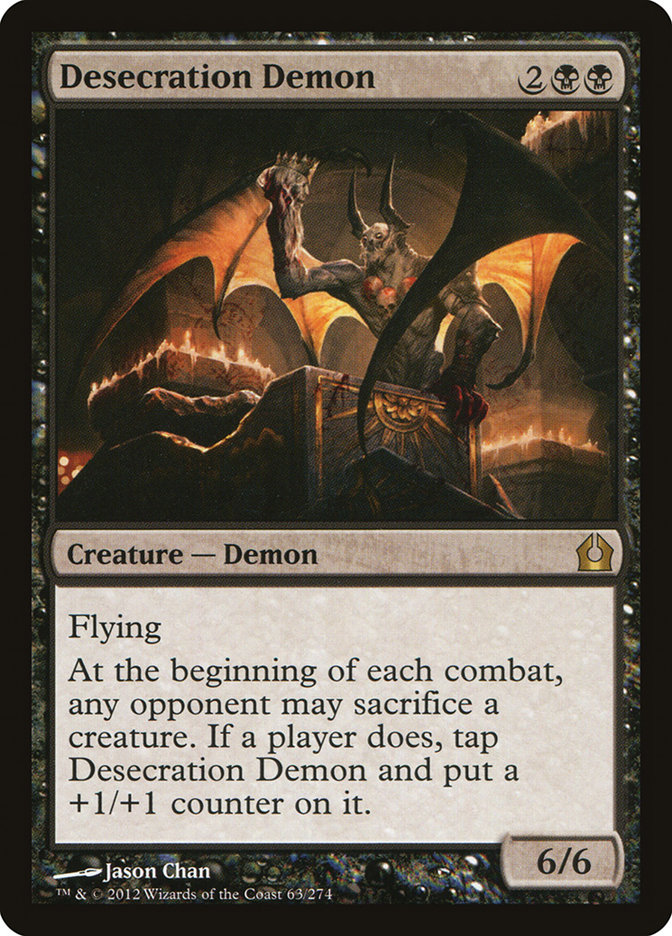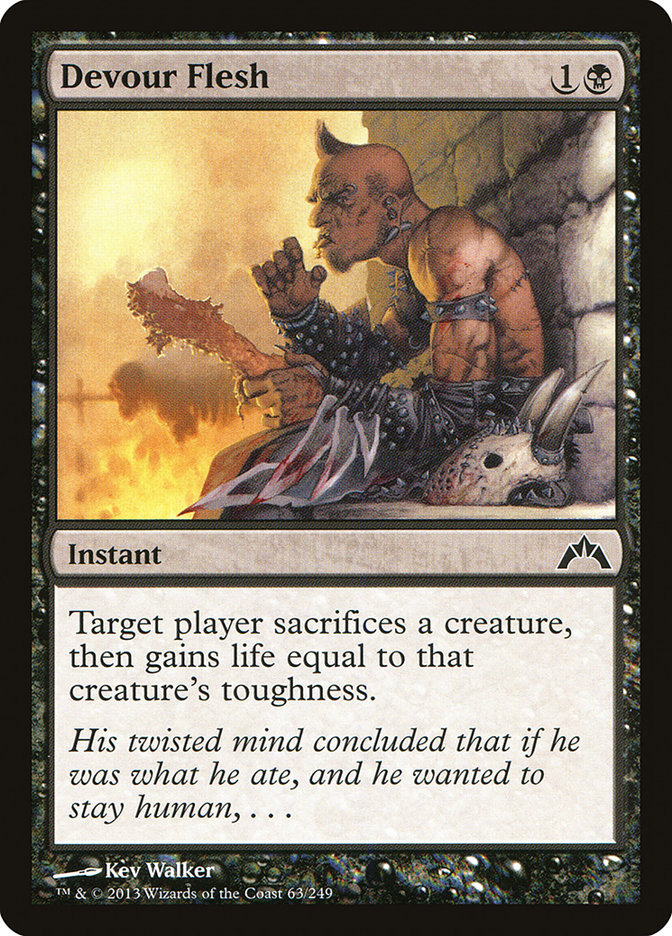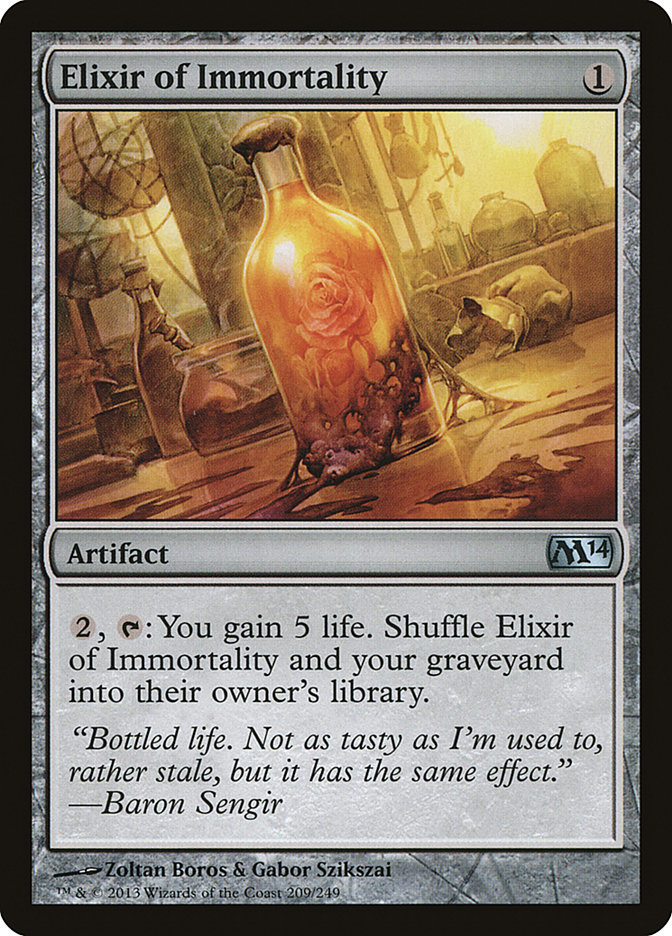I’ve been spending the majority of my time lately playing aggressive decks in basically all formats. Burn, baby, burn.
I haven’t exclusively been playing aggressive red decks though. The 50K was the last large event that I played in, and while I didn’t perform nearly as well as I would have liked, I still really loved the decks that I ended up playing: my BUG Midrange deck in Standard and Brian Kowal’s U/W Control in Modern. Ultimately, though, I think I just picked bad decks for that day. I’ve been playing both of those decks online in the time since, and they’ve been performing really great for me.
I’m someone who likes to play all kinds of different archetypes, so I’m always amused when someone expresses surprise at me playing an aggressive deck or surprise at me playing a control deck; usually this is just an indication of what moment in my Magic history that they are most familiar with. These days most of my tournament play is in Standard, though I’ve also been playing a fair amount of Modern and Legacy, but I basically gravitate to whatever format is the current Constructed format of note and work as hard as I can to get well versed in all of the different options that are viable in that format while I try to push the boundaries of that as best I can.
Standard is a format that feels like has settled on a short list of favorites—like it always does. In general, the most commonly played top decks are probably Esper Control, Mono-Blue Devotion, various forms of red-based aggro, Mono-Black Devotion, and then a smattering of decks that are good (for example, Brad Nelson Naya Control deck) but aren’t as likely to see play. In this metagame, I definitely still like my BUG Midrange deck from Louisville, which I took to a 47th-place finish.
Of course, since that time the metagame has shifted wildly, in large part because of Mono-Black Devotion, which made its first large splash that weekend. More than anything else, I think that Mono-Black Devotion after Louisville has completely shifted the way that the metagame is now situated, and now as a result we’ve seen a shift towards aggression as other decks attempt to take advantage of the whole in Mono-Black’s defenses against a ton of cheap creatures. Here is one of the decks I like in Standard:
BUG Midrange
BUG Midrange has many of the same problems as Mono-Black Devotion (it does, after all, share a huge amount of the same cards). Because of the other colors, I think that it has a lot of great access to cards that let it fight those fights and yet still have the core of weapons that makes Mono-Black Devotion scary. In addition, the extra colors give it a great deal of power when fighting against other opponents who may not be so aggressive.
Since last I talked about this deck, it has changed into this:
Creatures (14)
Planeswalkers (2)
Lands (25)
Spells (19)
- 1 Doom Blade
- 3 Abrupt Decay
- 1 Cyclonic Rift
- 1 Ultimate Price
- 2 Devour Flesh
- 2 Deadbridge Chant
- 3 Gaze of Granite
- 4 Hero's Downfall
- 2 Whip of Erebos
Sideboard

One of the major changes that I’ve made to the deck is the removal of this guy:
Now, don’t get me wrong; I’m a huge fan of Desecration Demon. There were just two problems. First, he kept dying to everything. Mono-Black Devotion had plenty of weapons. U/W and Esper Control had weapons. But the biggest reason was reason two: I’d put him into play and then just die over the course of the next turn or two to a swarm of monsters from the opponent.
This was simply not acceptable.
I thought back to something I heard at the 50K: "The day of the Desecration Demon is over."
I’m still not 100% sure if that is true. I do know that for the most part I haven’t missed him.
His replacement, Reaper of the Wilds, is often a much better defender. It is a little easier to accomplish a multi-card kill on Reaper of the Wilds (a burn spell following up a combat will often do it), but on the upside with only a pair of mana up, Reaper can actually be immune to many attempts to killing it. This makes the card quite a bit more resilient against the controlling decks as a means to make up for the slower clock.
The other major change was to take a page from Esper and start shifting towards this card:
At first, I went all in on Devour Flesh and started with four. After a while of testing, however, I discovered that I wasn’t exactly an Esper deck just looking for time. What I was doing with creatures was trying to have a combination of removal spells that would help suppress them. Versatility was a little more important than "any old removal." I shifted down to just two and brought back in Doom Blade and Ultimate Price. I wish that there were simply a "Victim of Night" I could be using, but you have to work with what you have to work with.
The sideboard ended up largely unchanged. One of the key things that I’ve had people ask me is why not more Thoughtseizes. Well, if you like Thoughtseize so much, you can certainly cut Negates for more Thoughtseizes. As it is, I keep shifting back and forth between 3 Thoughtseize / 2 Negate or swapping it for 2/3 the other direction. One of the reasons that I’m not so concerned about a lower number of Thoughtseizes is that in comparison with the Mono0Black Devotion decks there are many times when both cards accomplish the same tasks.
Importantly, though, I think about the Jund mirrors in Modern and how there is enough attrition that oftentimes you end up with a discard card in your hand and they have nothing in theirs. You might think this wouldn’t happen with cards like Underworld Connections potentially giving them fuel, but in practice it is exactly what happens because of the cards that you have to answer their Connections. As a result, in my experience having cards that are near-analogs has proven to be basically as effective. Esper also has access to Thoughtseize, and it usually runs only a few of them for similar reasons—it has other cards which can do the same work.
And then in that matchup, the countermagic is usually a bit better than Thoughtseize because it turns off the other deck’s ability to just topdeck out of the discard. When you have access to copious amount of blue mana, you really should just use it!
This isn’t to say that you should do the thing I’ve been seeing a lot of BUG lists do and move into trying to be a true fully three-color deck. Esper, for example, has been having a ton of problems with the more aggressive decks largely because of the way in which it has been stumbling on mana even if only for a few moments. This particular build of the deck is basically a Mono-Black Devotion deck running just enough mana to be able to comfortably support a green-based elimination package on top of everything else. Trying to go full bore into being an Ashiok, Jace, Hero’s Downfall deck that also runs green is just asking for trouble (even if you also decide to run Caryatid, a mistake in this archetype if I ever saw one unless you’ve decided to make Forests your base).
All told, this is a deck I’m still pretty pleased with. Unfortunately, try as I might, this deck seems to have a constant 50/50 against other black-based devotion decks, give or take a little bit of wiggle here or there. A big part of the reason is that the game comes down to a few parts:
1) Does the Rat stick?
2) Does the card-advantage engine stick?
3) Does the Erebos stick? (Note that this isn’t exactly for the same reasons as #2.)
This version of the deck has a ton more ways to handle #1, so it is more equipped for that fight. It also has a ton more ways to handle #2. In both cases, though, discard can strip those answers away. When I played more discard of my own, it really didn’t seem to help that much, largely because it meant that I was cutting out other weapons that would actually just help fight the same fight. Ultimately, it felt like small percentages either way. The top of the deck and who went first were often the biggest consideration for how this match went.
Erebos was the special case. If you really want to fight the Erebos fight, you should have a second Erebos. Unfortunately, though, there are a number of other matchups that matter, and Erebos is all but dead in the aggressive ones. Clone serves as the "soft-Erebos" in the Erebos mirror but also lets you have a great weapon in the midrange matchups and a solid fifth Gray Merchant against aggressive decks.
Ultimately, this deck is still a bit weaker against the fastest of the aggressive decks than I’d like. This is part of why I’ve been looking at a more pure control deck.
U/W Control
One of the biggest arguments against U/W Control in Standard is the other big counterspell-based control deck in Standard: Esper. In that matchup, there is a huge problem for U/W Control, namely that Esper gets to sing a little song:
It gets pretty annoying when you’re playing a control matchup and the only thing that you can do to get an edge is hope that they make a mistake, either in their play or in their preparations for the matchup. Really, the reason to play U/W Control is that your mana is better enough than Esper that you can expect to have fewer problems due to your own deck when you’re facing other decks. As I was watching matches for SCGLive and talking to pros about their experiences playing Esper, something very interesting was beginning to happen—people were beginning to recreate the strategy of Carlos Romao for their control matchups.
If you’re not sure what I mean, let me tell you about a moment in Magic history. Carlos Romao won the World Championship playing Psychatog, and he employed a strategy that was widely considered insane by other players of the time—he didn’t fight the card draw from his opponent. In his testing, he had come to realize that there was only one fight that actually mattered, and that was the fight over Psychatog and Upheaval. By only fighting over this fight, he was able to have so many counterspells that he would win it, and it would spell doom for the opponent.
In a similar way, Aetherling became one of the only fights that actually mattered in the Esper fight, at least according to a number of top players. People would simply run out of countermagic, and the remainder of the threats in both decks would simply be able to be answered by both players, so they usually didn’t matter unless the other bane of the control fight happened: mana advantage. One of the reasons that people argue about whether or not Blood Baron of Vizkopa is good or bad has to do with the simple conundrum of how to break the Aetherling problem—put in more Blood Barons and you are weaker in the fight, but don’t put in something different and you are conceding that that will be the only fight worth having.
With that in mind, I thought back to a previous season and one of the cards that made the control war have an entirely different tone:
One of the things that this card accomplished was making the far late game be one which was inexhaustible. Your Sphinx’s Revelations would just continually feed you more of the cards you already wanted, and you wouldn’t actually end up in a position where you would run out of cards to fight against an Aetherling, at least in theory. As a result, you could potentially fight about some of the other positioning cards a little more aggressively.
Here is the build I ended up with and have been having some small amount of success with online:
Creatures (1)
Planeswalkers (5)
Lands (26)
Spells (28)

With the exception of Syncopate, the one-ofs in the deck are one-ofs of inevitability; these are cards that I want to be able to have access to if the game goes to an unlimited horizon. Syncopate is really just an analog to Dissolve, Essence Scatter, and the cheap removal; a card that can potentially be used early for efficiently stopping a card and at the same time is a weak version of the same effect later in the game.
Since I’ve been working on this deck, I heard a rumor that Andrew Cuneo has a similar deck that only uses Jaces to finish the game, and that sounds pretty intriguing honestly. There could very well be something to the idea of just using some combination of Jace, Architect of Thought and Jace, Memory Adept to finish out a game and then using all control cards to hold things down. I plan on trying that version of the deck, but in the meantime this deck still has the "crutches" of a single Aetherling and an Elspeth.
The board includes all of the cards I’d like to have to fight a mirror as well as a versatile array of cards for other matchups. The unusual cards you see here are probably Blind Obedience and Glare of Heresy. In my own experience, Blind Obedience is just incredibly powerful against haste and has the added benefit of making Obzedat less frightening. Glare of Heresy is just a solid card to have in a long fight against other control decks and has use in the matchups against white-based aggro, which are becoming all the more common.
All told, I know that I still prefer attacking with aggressive creatures in Standard right now. But I think it is important to have access to some good weapons when it comes to playing the other side of the game, and these two decks are a good way of taking control.
Until next week,



